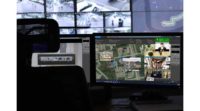Genetec Predicts Physical Security Industry Trends for 2023

IMAGE COURTESY OF GENETEC
Genetec, a technology provider of unified security, public safety, operations and business intelligence solutions, shared its top predictions for the physical security industry in 2023.
Labor shortages drive demand for unified security solutions
In the Genetec 2022 State of Physical Security Report, 50 percent of respondents said their physical security team experienced human resource challenges last year. For 2023, security leaders are re-evaluating their technology stack seeking solutions that help streamline tasks, automate processes, and enhance team efficiency. Unifying video surveillance, access control, automatic license plate recognition, communications technology, and other valuable functions can make an operator's job easier and reduce costs and training. Built-in analytics or decision support features can further streamline operations.
Modernizing access control will be a top priority
The report also showed that 67 percent of organizations are planning to invest in access control system (ACS) modernization in 2023, putting it at the top of the physical security tech investment list. Modern ACS include built-in cyber defenses and health monitoring tools, and higher levels of automation. Upgrading to a modern, open ACS will help organizations eliminate the weak points of legacy systems and better defend against cybersecurity threats, as well as enable new capabilities like mobile credentials, biometrics, and cloud-connected controllers and services, to implement over time.
Hybrid-cloud deployments will drive demand for cloud-connected appliances
Hybrid-cloud deployments are gaining traction, with some organizations opting to conserve security devices and infrastructure investments that are not cloud-ready, and others having bandwidth limitations or the need to keep some data processing and storage on site. As businesses rationalize costs, concerns, and approach to cloud migration, we can expect an increase in demand for ready-to-deploy hybrid-cloud appliances. This infrastructure will support edge-computing workloads and make existing devices cloud-compatible, and help centralize access to systems and data across many sites.
Improving cybersecurity continues to be a top concern
Research by Genetec shows that 36 percent of IT and security professionals are looking to invest in cybersecurity-related tools to improve physical security in 2023. While a more holistic, automated approach to defending against threats will take precedence, so too will proactive security architecture planning and procurement. These measures may include:
• replacing legacy equipment before succumbing to end-point failures to better mitigate risks
• using intelligent maintenance tracking tools and metrics to improve forecasting
• relying on external expertise to adapt security architecture planning as supply chain lags
• standardizing on solutions built with cybersecurity and privacy in mind to enhance resilience across the partner ecosystem
This take-charge mindset will help organizations better defend against cyberattacks and become an essential factor in preserving business resilience and continuity.
Other notable trends Genetec anticipates impacting the industry in 2023 are the extraction of physical security data pushing digital transformation forward, growing collaboration and convergence of IT and physical security teams, and the continuation of remote work driving increased need for space utilization data.
These predictions are informed by a Genetec report including insights from 3,700 security leaders worldwide, and the company's visibility as the industry’s top provider of video management systems and fastest-growing and global No. 2 provider of access control systems (ACS), per global research analyst organization Omdia.
For more information, read the full Genetec 2022 State of Physical Security Report.
Looking for a reprint of this article?
From high-res PDFs to custom plaques, order your copy today!








